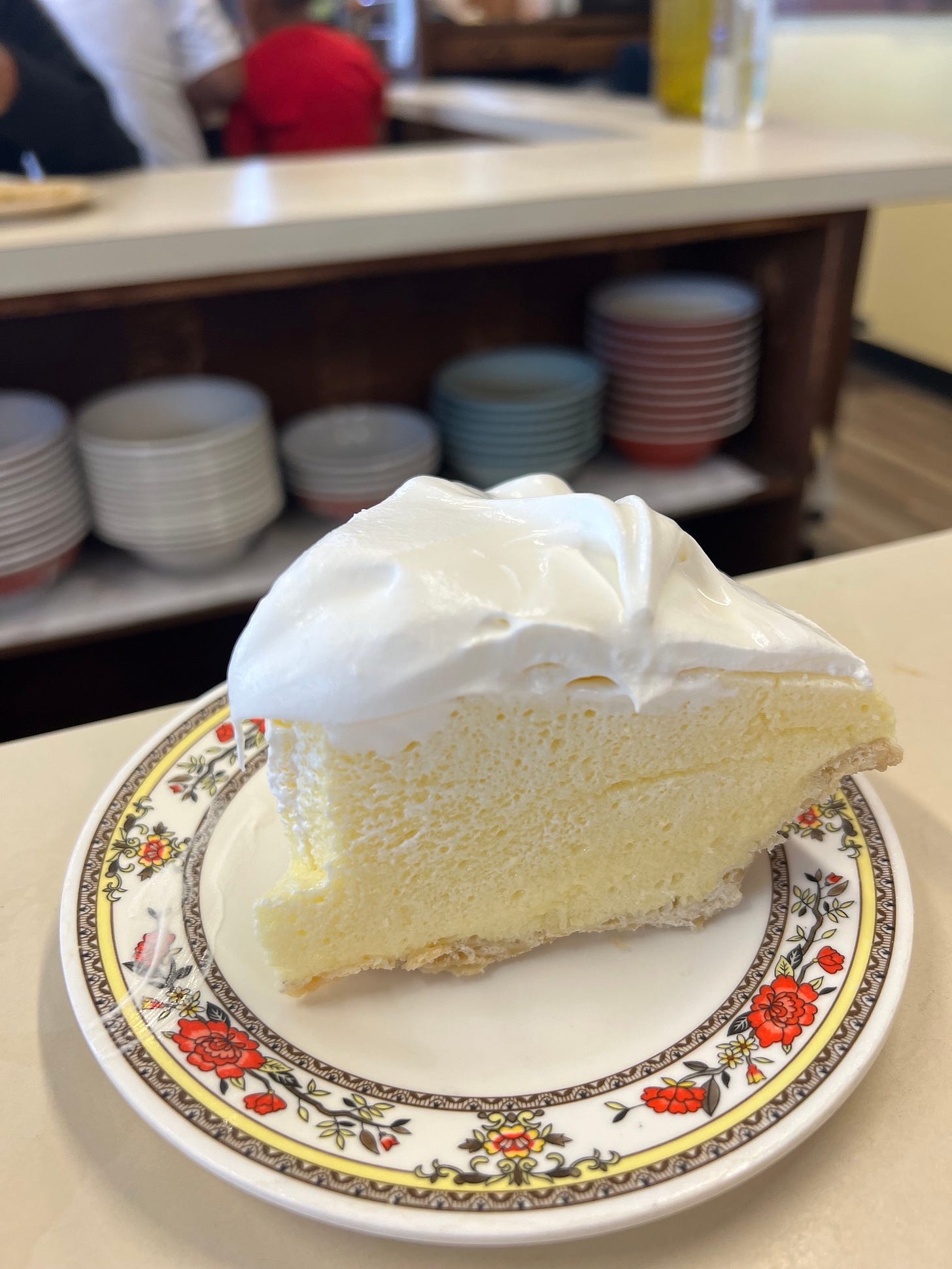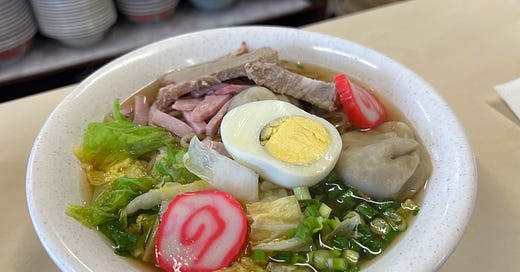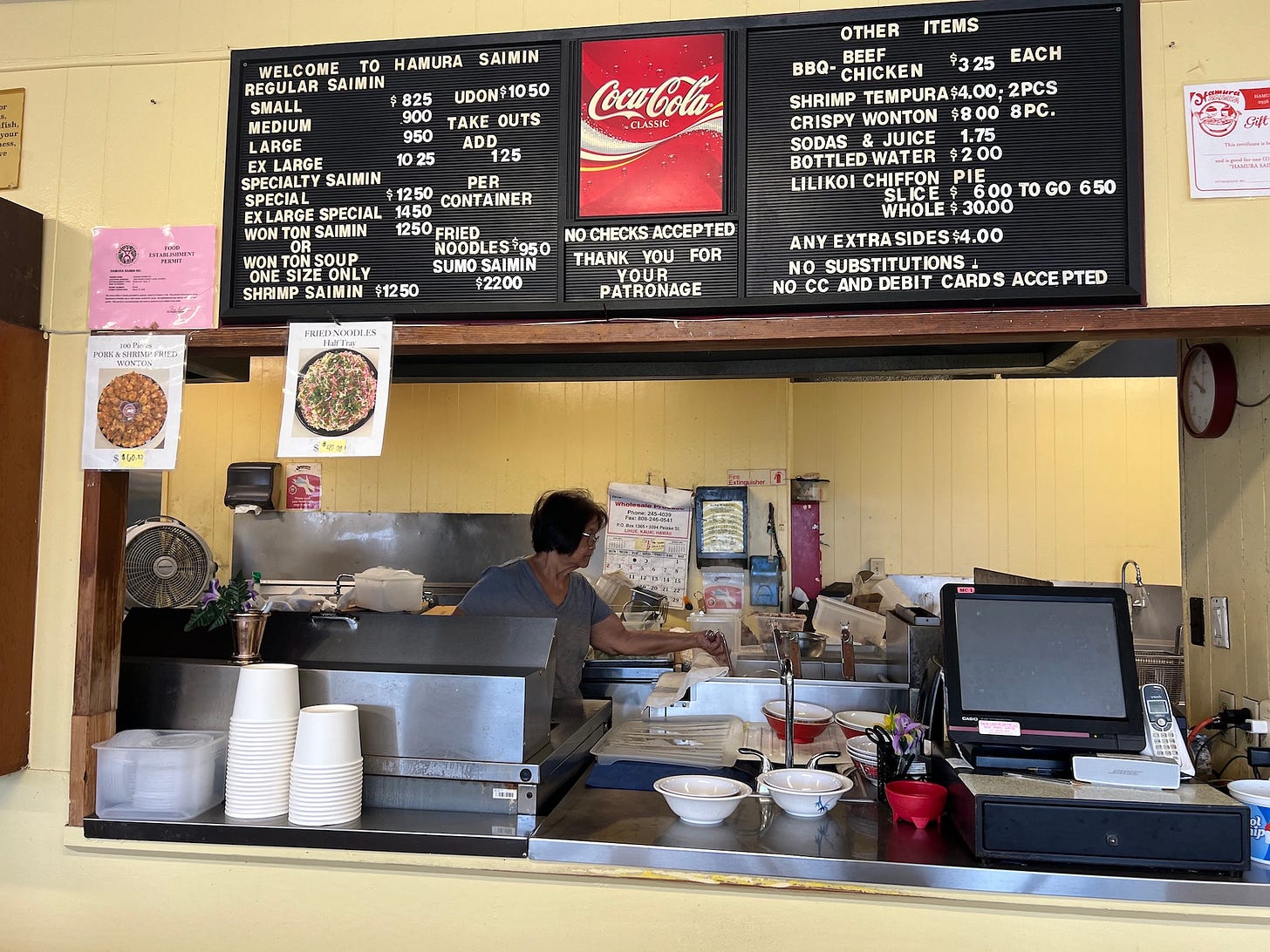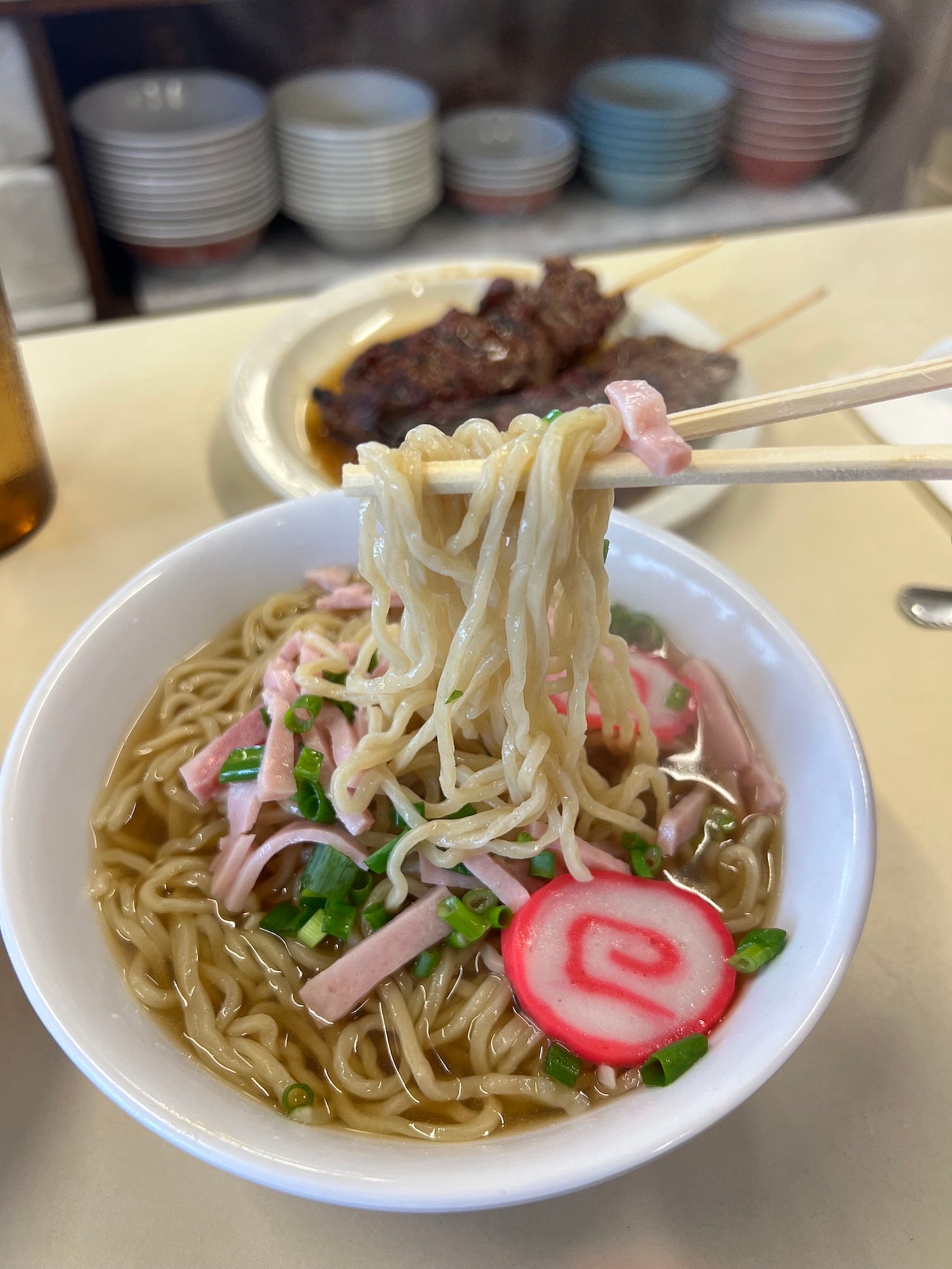FOODIE TRIP: Hamura Saimin Stand on Kauaʻi
This old-school saimin shop in Līhuʻe serves classic Hawaiʻi-style noodles that got the attention of the James Beard Foundation. For real.
It’s not everyday you eat at a James Beard Award-winning restaurant.
Unless you live in Līhuʻe on Kauaʻi. Then you would probably eat there a lot.
The iconic Hamura Saimin Stand — revered by locals for generations — was honored in 2006 by the prestigious James Beard Foundation as an American classic. Of course, you’d never know this when you walk into the unassuming restaurant, converted from an Army barracks and painted a distinct periwinkle. The U-shaped Formica countertops lined with simple wooden stools haven’t changed in decades — and regulars like it that way. Even the menu — just a dozen or so options — hasn’t changed much, either.
The first time I ate here was over 10 years ago, on an assignment for HAWAIʻI Magazine. Lori Tanigawa, the granddaughter of the stand’s founders, Charles and Aiko Hamura, was running the business. (She still does, actually.) Back then she said the stand sold more than 1,500 bowls a month — more on rainy days. The recipe for the saimin broth — a well-kept secret — originated with Aiko Hamura, who made the saimin noodles herself and sold them to customers in the sugar plantation camps in Līhuʻe.
She and her husband, Charles, opened Hamura Saimin Stand in 1952, in the location where it stands today on Kress Street. In those early days, there were only six wooden stools surrounding a cook who made the saimin to order. The menu was even smaller, with different varieties of saimin and barbecue beef and chicken sticks. Today, the shop can accommodate about 35 people and the menu has expanded to include fried noodles, crispy won tons and the lightest, dreamiest lilikoʻi (passion fruit) chiffon pie you’ll ever eat. It’s a recipe Tanigawa came up with about 20 years ago.

Saimin is a classic Hawaiʻi noodle dish, one that you won’t find anywhere else in the world. The noodles are darker in color, curly and slightly chewy when cooked — different from Japanese ramen or Vietnamese pho noodles. The broth is also lighter than most ramen dashi and usually made from shrimp, mushrooms, ginger and kombu (dried kelp). Its origin traces back to Hawaiʻi’s plantation era, where immigrant workers cooked these noodles with whatever they had.
Here’s what you need to know if you plan to visit Hamura’s — and you should:
The saimin stand is open from 10 a.m. to 10:30 p.m. Monday through Thursday and until midnight on Fridays and Saturdays. Sunday it closes at 9:30 p.m. The busiest times are during lunch, around 11 a.m. to 1 p.m. Expect to wait in line.
There’s a lot of street parking in the area.
The restaurant is cash only.
The saimin is a must-order. It comes with slices of ham, kamaboko (fish cake) and green onions. The most popular is the Special Saimin, which comes with all that plus veggies, onions, roast pork, won tons and an egg.
Locals love to pair saimin with barbecue sticks — beef or chicken. Hamura’s sticks are slathered in a thick sauce and slightly charred. Think of it like yakitori.
Order a slice of lilikoʻi chiffon pie. Or the whole pie. You won’t regret it.
Hamura Saimin Stand, 2956 Kress St, Līhuʻe, Kauaʻi, (808) 245-3271.







